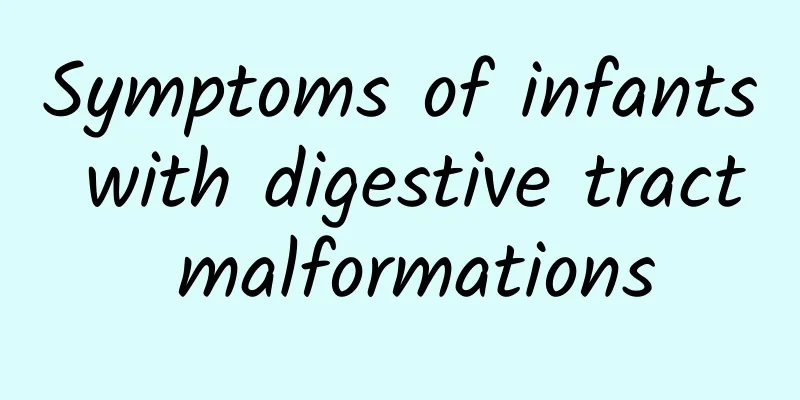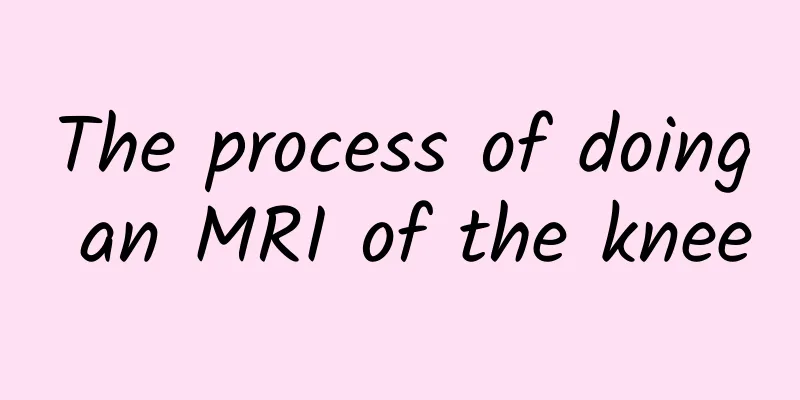Symptoms of infants with digestive tract malformations

|
Digestive tract malformations are congenital malformations. Infants may have this malformation. When this malformation occurs, the child often shows some symptoms, the most common of which are vomiting and abdominal pain. If misdiagnosed or not treated in time, it may cause more serious complications for the child and may even be life-threatening, so it is imperative to receive timely treatment. Symptoms of infants with digestive tract malformations : 1. Vomiting after birth that progressively worsens, or the vomitus contains yellow-green liquid. 2. Abdominal distension, which progressively worsens and may be accompanied by vomiting or abnormal bowel movements. 3. Abnormal meconium discharge after birth (normal babies will have meconium discharged within 24 hours after birth, and will be completely discharged in 2 to 3 days). Diagnosis: With the improvement of prenatal diagnosis technology, more and more gastrointestinal malformations can be diagnosed prenatally. If prenatal diagnosis reveals increased amniotic fluid, dilated esophageal blind end, abnormally dilated gastric bubble, duodenal obstruction, abnormally dilated intestinal tube, intestinal tube herniation into the chest cavity (diaphragmatic hernia), etc., you need to be highly alert to the possibility of congenital digestive tract malformation; Some other abdominal cystic masses, such as common bile duct cysts and ovarian cysts, are also often discovered before delivery. Whether congenital gastrointestinal malformations are suspected before birth, or surgical vomiting, abdominal distension, etc. occur after birth, parents should go to a pediatric department or children's hospital for early diagnosis and treatment. Treatment : At present, most congenital gastrointestinal malformations can be well treated through surgery and have a good prognosis. With the development of minimally invasive surgery, it is now possible to complete operations such as congenital esophageal atresia, diaphragmatic hernia, duodenal obstruction, common bile duct cyst, hiatal hernia, congenital anal atresia, and congenital megacolon under thoracoscopic and laparoscopic surgery.Laparoscopic surgery can minimize surgical trauma, has a fast postoperative recovery, and leaves less obvious surgical scars. Its good results can reduce the patient's psychological barriers in adulthood. |
<<: Is digestive tract perforation serious?
>>: Whole gastrointestinal tract radiography
Recommend
The efficacy and function of wormwood cushion
We all know about moxibustion as a way of prevent...
How to take Chinese medicine for weight loss effectively?
With the continuous development of traditional Ch...
What kind of people are prone to pituitary tumors?
Pituitary tumors usually occur in adolescent male...
What causes chest tightness and constant sleepiness?
A person's nerves are directly related to phy...
How to heal quickly after a knife cut
In the hot summer, many people suffer from "...
What causes thin stools?
Thin, strip-like stools may be caused by intestin...
What are the dangers of the kneeling method?
Many people choose to kneel on their knees to los...
What are the effects of Angelica dahurica and Poria cocos?
Angelica dahurica plus Poria cocos is a very comm...
Is anemia also graded? Anemia should be treated promptly
Patients with anemia will experience symptoms suc...
Tumor is actually a genetic disease! How to prevent malignant tumors?
With the development of human science and technol...
What to do if the stomach hurts due to medication
People who take medicine or have infusions will h...
Are there any side effects from taking too much Gastrodia elata?
"All medicines are poisonous to some extent&...
How long does it take for a duodenal ulcer to heal?
Duodenal ulcer is a very common disease at presen...
How do women know what their body type is?
According to traditional Chinese medicine, a pers...
How long does a gout attack usually last?
Gout can cause severe pain to patients. After suf...









